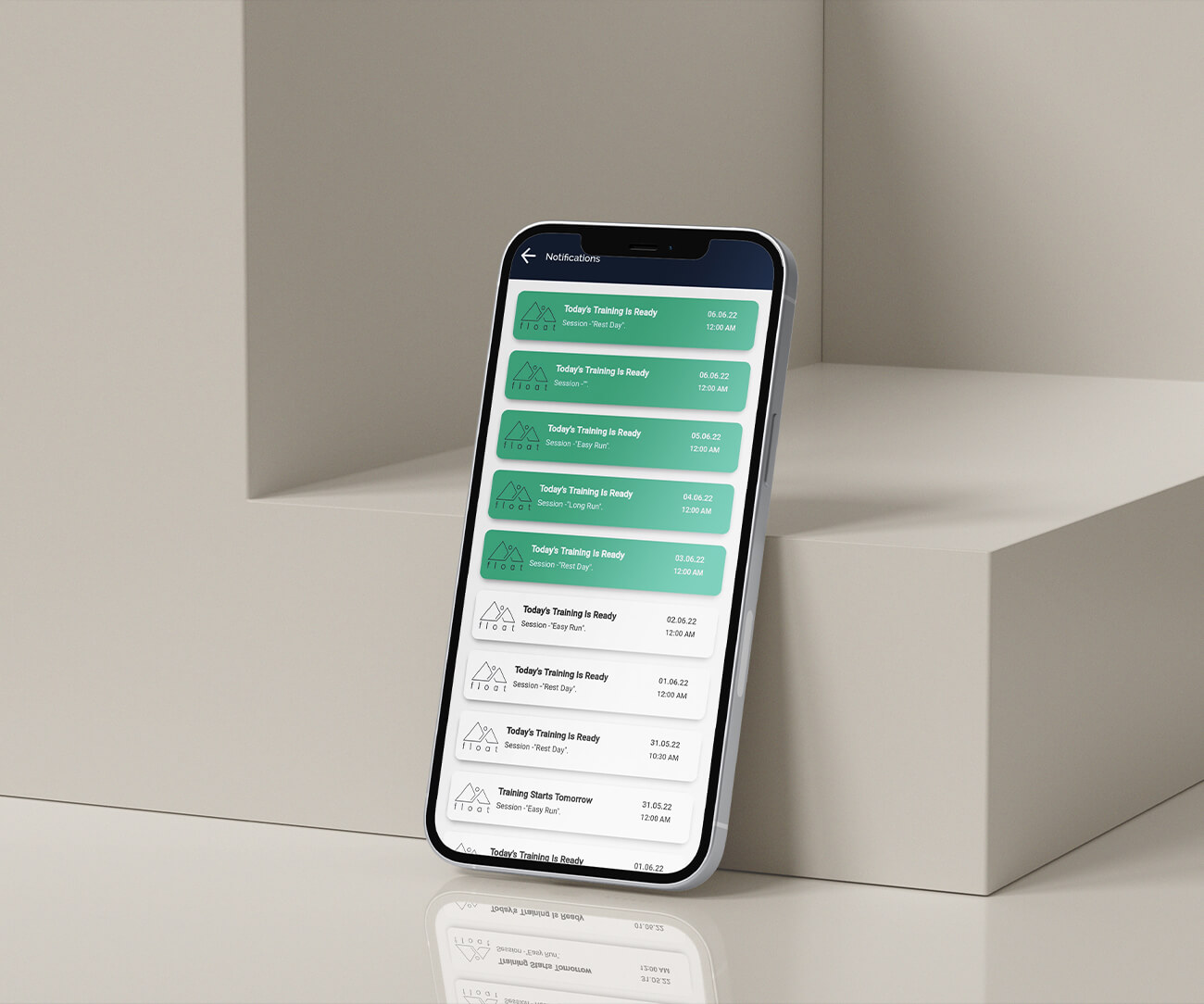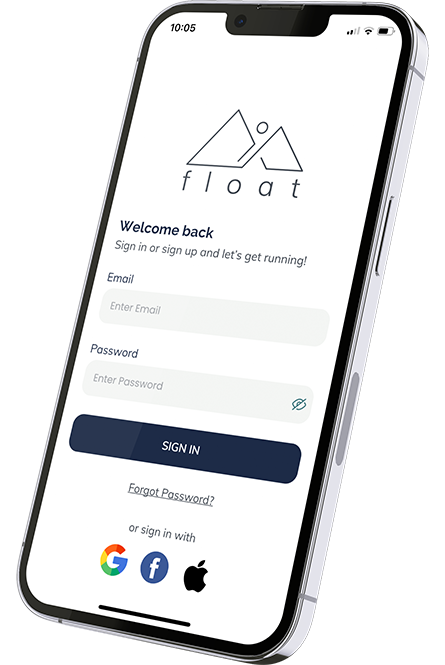Our global running community means the world to us. We are part of it, so we understand that newcomers as well as some seasoned vets could do with a little bit of know how we have acquired over the many years, trails and beers. We've put together the answers to some of the FAQs as well as list of running terminology that will be useful in helping you become a more rounded runner!
Float Running Co
Float Running Co
Our global running community means the world to us. We are part of it, so we understand that newcomers as well as some seasoned vet's could do with a little bit of know how we have acquired over the years, many trails and beers. We have put together some the most frequently asked questions as well as list of terminology that will become useful.

Answering those lingering FAQs on your mind
Is this an individualized programme?
No, this is a race/distance specific training regime catering to either the organized event you have signed up for or your own personal distance challenge.
How long does my subscription last?
Google Play store and Apple iTune iOS platforms require either 1, 3, 6 or 12 month subscriptions from which to choose. We have gone with a blanket 6 month subscription for everyone who signs up for a training plan.
This is a once off payment for the ENTIRE 6 months and is the same for all our plans from 8 weeks (10 km) to 16 weeks (100 milers) to individual Race Specific plans.
Once the 6 months is over, the plan will lapse (no need to cancel), and that will be that!
NB: if you want to change plans halfway through you will have to pay full price for the new plan, and lose the remainder of the old plan.
Sorry, we haven't worked out how to fix this issue yet, but we're working on it!
The Apple/Play price is different than the website/app?
Our website and app prices are all in USD, so when you join, Apple or Google convert them into local currency at their FX rates. This is mostly confusing for our Hong Kong, Australia, and New Zealand runners, but we needed to standardise our prices globally.
Google also adds local tax / VAT depending on your location, whereas Apple doesn't (what you see is what you pay), so watch out for that too!
Our hands are kind of tied by this, but we still dare you to find a 3-4 month training plan at such good value elsewhere 😉
If I get injured can I get a refund?
First off, we are bummed that any of our athletes would get injured, but such is the nature of the sport. Our programmes are developed to allow for sufficient recovery time between training blocks and rest time to help the muscles heal. At all times listen to your body - if you are screaming out for some additional rest at any stage, then rest. Rest is part of the process.
But remember the mental game - heading out when you are tired (not injured) is part of the process. This is how we gain strength to run such challenges - its 30% body/conditioning and 70% mental....
Unfortunately, If an injury does occur we won’t be offering any refunds. However, ping us a message and we’ll do our best to aid you through the recovery process to have you back up and running again ASAP. We’re not doctors, but we do have experience with running injuries (we’ve all had ‘em) and ideally have you skip a week or two (if minor) before recommencing the plan, albeit with a slightly adjusted target.
What kind of intensities do you reference for training?
You can check out our terminology section below for a description of our Training Effort and key Running Terms used throughout the plans.
Within the app you’ll also find clickable keywords (e.g. @EASY or @STRIDES) giving a brief description of each.
How long does a programme last?
Typically a training programme lasts anything between 8 and 16 weeks. We assume you will come in with a decent base level of fitness, be it a 5k upgrading to the 10k or 50k upgrading to the 100k distance, and then up the ante with the float programme in order to succeed with your goal distance/race.
The community “race crews” offer some advice from others doing the same programme and accountability to complete the training. Every so often we will offer up advice and race tactic ideas on the race crews page to help you stay motivated.
Prerequisites
Going into a 100k programme having never run before is OBVIOUSLY a terrible idea. You wanna scale up, slowly. This to avoid both injury and, well, killing yourself in the process…
If you’re a weekend Park Run 5k runner then we suggest turning up to our 10k free program. Then set the next goal - 21k. Scaling up always needs a base of some sort before upping the race goal, but again, everyone is different. We have athletes that have gone from 21k right up to a 50k for their next event. Very do-able. However, 21k directly to 100k, you lower your probabilities.
We want everyone to succeed here, avoid injury and give you the best opportunity to do so. Scale up slowly!
Why do you train using hours/minutes vs distance?
This is a far more effective way to train for ultra endurance events than just ticking off miles.
“Time on feet” is the standard training metric when it comes to an ultra event and is more important than distance, as not everyone can go out and hit 10km straight off the bat, as everyone is different.
But by focusing on time and effort, both a fast and slow runner (all relative of course) can achieve the same positive results from their training session.
Training for time also strengthens the mind knowing that during your race you’ll be out there for a minimum of xx minutes/hours.
Ultimately a faster runner will go further in a given time and will complete the end race quicker, but you’ll both have trained for the same duration leading up to the event.
Can I contact you regarding any issues with the training?
Of course! At any time drop us a Coach Note under your daily training session, or email us if you want a more in-depth answer tackled. We are here to help and get you in peak shape to achieve your goal race.
These are your go to emails, any one will work. Hit us up, we will do our best to reply to you within 24 hours.
Do I get to keep the programme for the following year or similar race?
Once the plan/race has been completed we will send you a summary of your training, but not the actual sessions.
We obviously would love for you to return for the following year’s event or even sign up for a new plan once your race is finished (subject to us covering a plan for that event), but the training plans might have changed/improved based on feedback, so it's better to sign up again!
The other option is a distance based training plan that aligns with your next event - these start every Monday. We do hope that by being in a group of athletes training for the same race you’ll feel a sense of added motivation and accountability to complete the required training. Our passion is training and to see runners succeed.
What if I don’t finish the stipulated weekly training sessions/hours?
Like anything else, the more training, effort and time you put in the better your results (up to a point - do not overtrain).
Following our program religiously should* allow you to finish your stipulated race or event with relative ease. We laugh here cause running in general it ain’t easy... full stop. But you get it. You’ll stand in good stead to smash your race as the fitness level built up leading to the event should allow for a GREAT run.
But, as we all know, life gets in the way. We feel lethargic some days, we don't have the drive to train on others, people get sick. Family, work, and a whole myriad of events that preclude us in getting that run done. That's life. That’s just the way it goes…
In an ideal world you’ll have all the time in the world to tick off each session, however this is simply not always the case. Missing a session here or there won’t lead to disaster, not to worry. But beware, there is a fine line between slacking off and missing the odd session. That’s up to you!
*Should - we can’t guarantee a finish due to either injury or stomach issues, general crazy spells, et al.
What if I have a race in the middle of the float programme that doesn’t fit the specified miles for the week?
We 100% encourage a mid-programme race! However, just make sure it’s not nearly as far as your goal race. I.e. rather don't run a 100k in the month right before your 100miler…
Rather choose a race up to about half the target race distance. This is also a great place to test your final race strategy, nutrition and chosen kit.
We will provide a chart at the start of each plan showing when the 2 LONG 'Long Runs' take place so you can see if there's anything in your area that fits into that.
But if you don't use our dates, the onus will be on you to adjust a few sessions before and after your chosen race date to allow for some taper and recovery time.
Why all the interval and hill sessions?
Yup, we agree, they do hurt. A lot. But these ESSENTIAL threshold workouts allow your body to adapt to higher intensity strain, essentially allowing you to run longer and further with less effort once adapted.
During a race you want to achieve maximum gain with minimal output, i.e. you remain fresher for longer and are able to go the distance and maintain pace throughout.
By hitting these sessions, you’ll be expanding your engine and running ability, and by sticking to these tough days you will learn to enjoy them. Eventually haha.
What is the difference between float training zones and the zones on my watch?
Our zone exertion levels are explained within our Training Effort section below. These are based on the 4 major watch brands (Garmin, Suunto, Coros, Polar) and their respective zones they incorporate. After a week or so you’ll easily be able to distinguish between the zones we use vs your watch depicted zones.
We don’t want you to stare at your watch to check what output you’re in whilst running - you’ll notice our methodology bases the zones on your own output. How hard is it to breath - are you puffing and panting or conversing easily, etc. Have a read - anything you want cleared up we’ll be happy to assist.
Examples of intensity zones for various watches below:
Garmin > intensity zones > Z5 Max, Z4 Threshold, Z3 Aerobic, Z2 Easy, Z1 Warmup
Suunto > Maximal, V.Hard, Hard, Moderate, Easy
Polar > Cardio load > V.High, High, Med, Low, V.Low<
Coros > Anaerobic Power >95%, Anaerobic Endurance 89-95%, Threshold 85-88%, Aerobic Power 75-84%, Aerobic Endurance 59-74%
How do I set up my watch for training intervals?
We provide a link to our article with links and YouTube videos on the major watch brands, but in case you missed it here you go again:
My Coach messaged me but I can't see it?
OK this one is on us as we're still developing the app and this is not a bug, but a feature (but also mostly a bug...)
When you get a notification you have to manually go to where the original Coach Note was posted and look for the Ellipsis / Speech bubble next to your comment.
So for example you send a note on Tuesday, we reply on Wednesday, you'll get a red bell notification which when you click it does nothing (d'oh!), so instead you must go back to the Tuesday session and click through to the 2nd screen, right at the bottom will be the speech bubble, click on it and there's your reply!
We are working on this functionality for v2 of the app because it's utter crap, please just bear with us!!
If it doesn't challenge
you, it won't change you!
float methodology, terminology, and training effort
Training effort and terminology
At float running co, our training follows time and effort based sessions. Each and every one of us is different, so we can't assume 2km will take “xx” amount of minutes for every runner, or that you can even run 2km to start with!
We have adapted our sessions into time based intervals attached to 5 metrics on which to base your relative effort. You'll notice within each session we reference your daily session against these 5 metrics, with pop-ups explaining their intensity for easy reference.
Other popular run tracking apps use various metrics: Strava uses RPE (Rate of Perceived Exertion); with TrainingPeaks utilizing rTSS (Running Training Stress Score). All similar variations that are based on your relative effort. They all have one thing in common - how hard are YOU pushing - a quantifiable variable on which to base your effort. Someone else's RPE 7/10 may be your RPE 9/10 or their EASY may be your HARD etc…
We incorporate regular “stride” sessions (short bursts to elevate the heart rate and open up your regular stride), hill work, and tempo sets to get your effort up, but never to maximum zone. Things may be tough at first, but over time they become easier, and you’ll even start to enjoy them, we promise!!
Below we have outlined our terms using our simplified metrics cross referencing the above-mentioned popular apps as many runners have become accustomed to using these to log their mileage/tracks (crowns etc).
TRAINING EFFORT
Also referred to as Relative Perceived Effort (RPE), we use the 5 levels below to ensure you're training at your ideal level.
LIGHT
Effort 1 out of 5: brisk walk or a slow jog, purposely holding back.
EASY
Effort 2 out of 5: your forever pace, unlaboured comfortable conversation.
MODERATE
Effort 3 out of 5: race pace, 1 or 2 sentences possible.
HARD
Effort 4 out of 5: pushing yourself, 4 or 5 words only, unable to maintain for long periods, boosting!
MAXIMUM
Effort 5 out of 5: everything you got, bear is chasing you, can hold for very short time.
TERMINOLOGY
STRIDES
Short bursts of speed lasting 20-30s, go HARD! Followed by 30-40s easy recovery before the next burst.
TEMPO
Sustained, faster pace of running maintained for 5+ minutes, MODERATE to HARD effort.
PROGRESSIVE
Start EASY and gradually increase pace through all effort levels until you are pushing HARD by the end.
INTERVAL
Periods of high intensity running (MODERATE to HARD) alternated with low intensity running or walking (LIGHT to EASY), repeated several times.
RPE
Relative Perceived Effort: your personal 'gut feel' metric of the level of effort at any given time during a session. See 'Training Effort' above for more detail.
REST
Trying to do as physically little as possible is the aim of the game, ideally 100% feet up and chill!
RECOVERY
This includes foam rolling, yoga, stretching; anything around 20mins of very light movement to keep the blood flowing and prevent lactic acid build up.
ACTIVE RECOVERY
Longer workouts on the foam rolling or harder yoga and deeper stretching. Can also include a brisk walk, medium hike, or light jog to keep the legs and limbs moving. Generally sessions will be around 30-60mins.
The majority of your ultra race pace would be a mixture of EASY (flats) to MODERATE (hills) with a slice of HARD thrown into those final few miles when leaving it all out there on the course...
The structure for our training follows a four phased system, namely: BASE, BUILD, PEAK and TAPER, with sufficient recovery time built in between the four phases.
BASE:
This is where an athlete (yes you!) gets to work on their fitness, building a base level that stands them in good stead for the training ahead.
BUILD:
Just what the word entails - we build on your base fitness upping your aerobic engine and musculoskeletal system through our carefully curated training sessions. We train the least specific factors furthest from the event, ie quick speedwork and short hill reps from the onset (ie LEAST specific to an ultra - if that's what you are training for here). This is switched around for a plan like the marathon distance. The hard yards with big benefits. Usually the shortest block with the highest intensity.
PEAK:
Think “The long run, lengthy steady state intervals, sustained hill efforts…” The most specific exercises will be worked on here like endurance runs and long hill sets catering specifically to your event. We incorporate other external factors into your sessions like nutrition advice and night running (for an ultra). Always a tough block and the juice of your training. A Peak block usually lasts between 3 - 4 weeks.
TAPER:
Time to drop the intensity and volume, allowing the body to rest and recover. Fine line here as you don’t want to let things get sloppy and lazy, right? A typical taper lasts 1.5 - 3 weeks depending on your race distance.

Summary
With over 30 years of running experience between your two coaches, we have found what works best and applied this to the methodology behind all our training plans. We train smart, not hard (ok, fine, we train hard too!).
-
Knowledge + Experience = Ideal Training
-
Quality > Quantity
-
Train at your best effort





